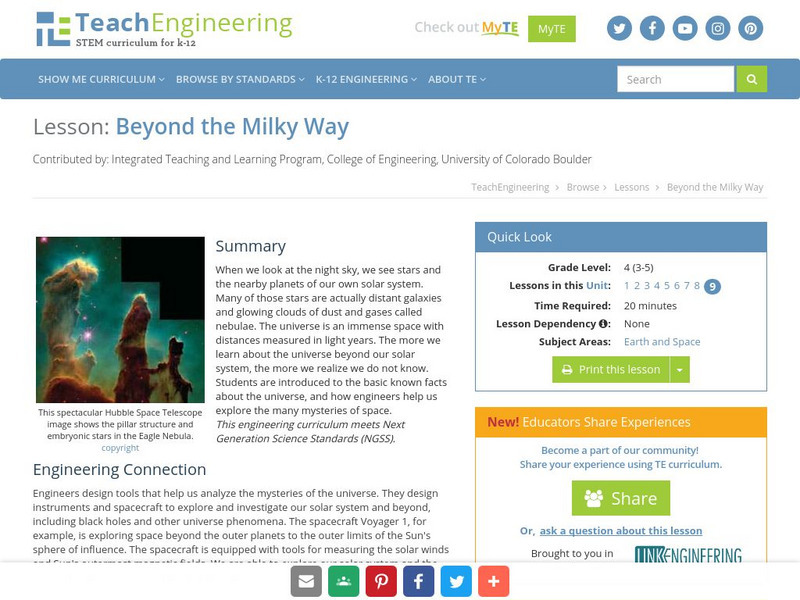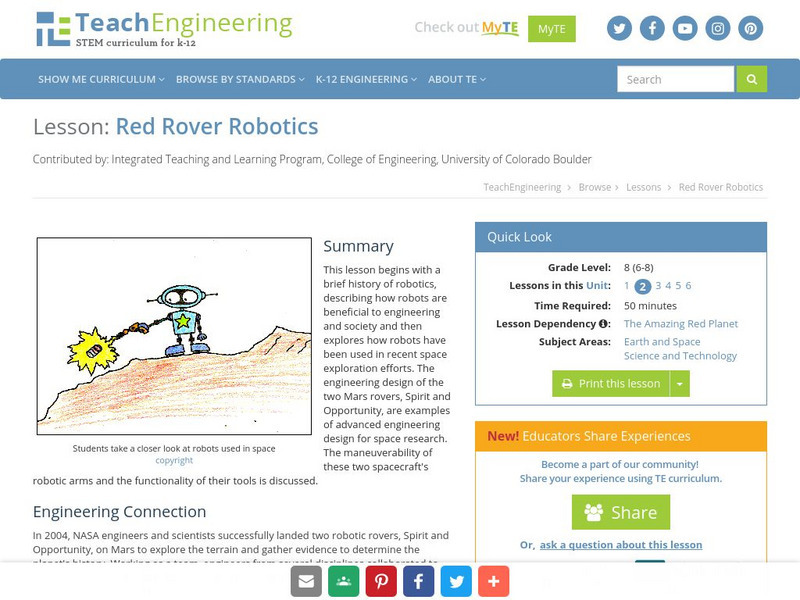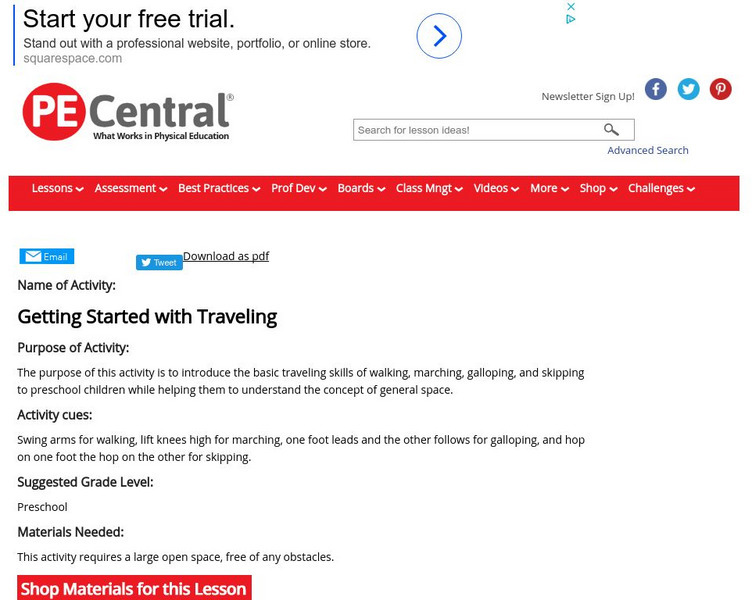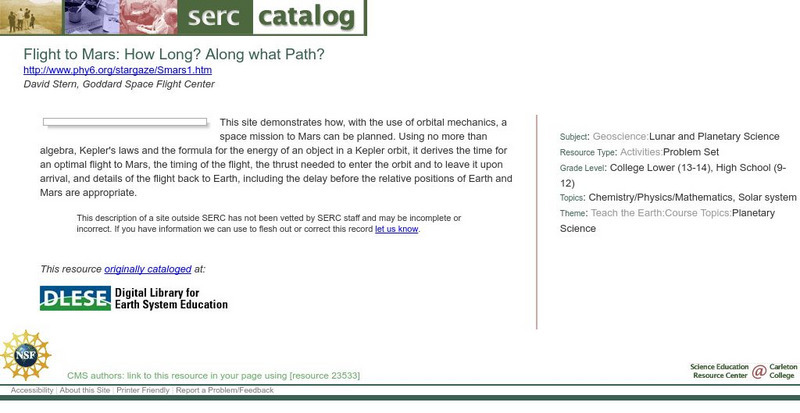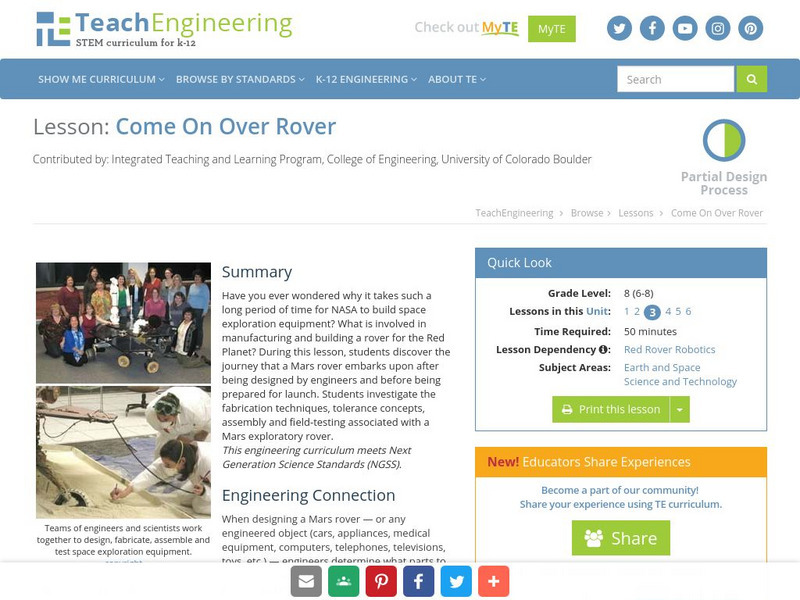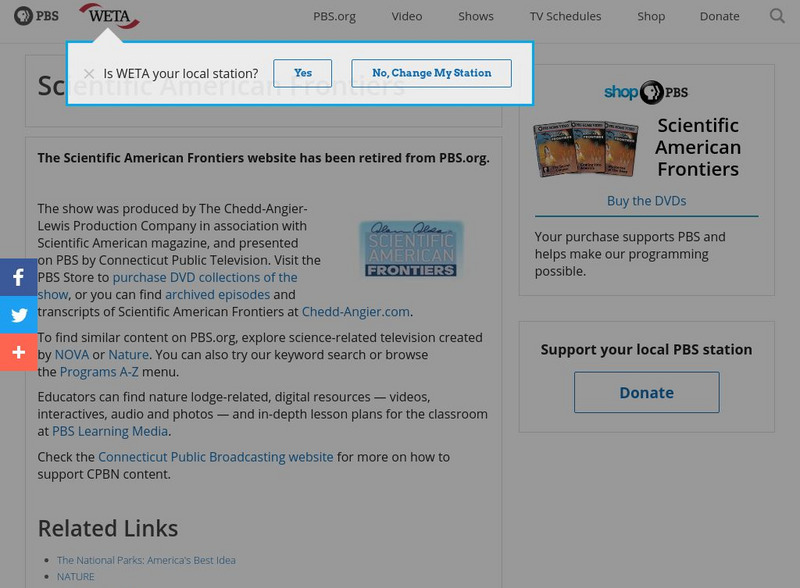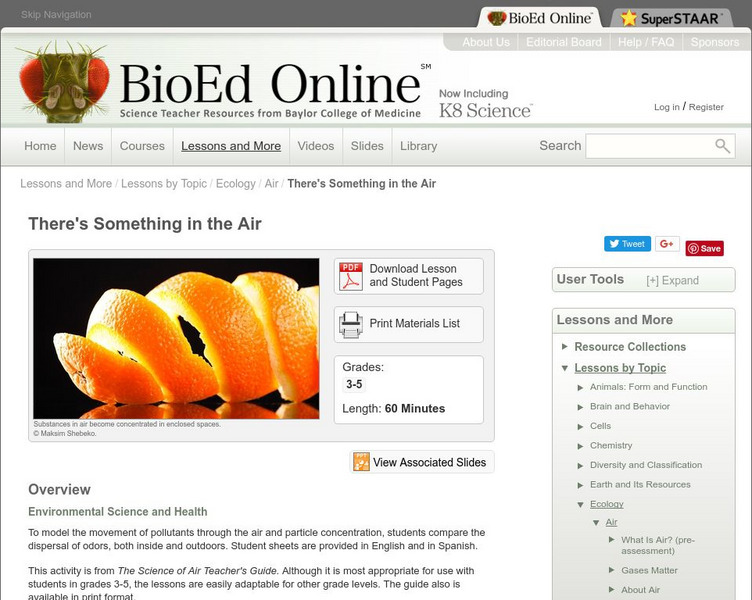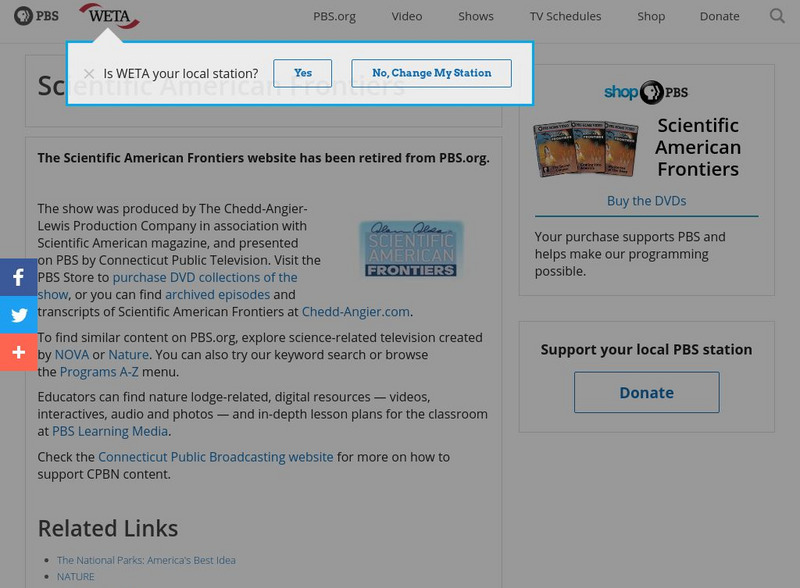TeachEngineering
Teach Engineering: Beyond the Milky Way
When we look at the night sky, we see stars and the nearby planets of our own solar system. Many of those stars are actually distant galaxies and glowing clouds of dust and gases called nebulae. The universe is an immense space with...
Science Buddies
Science Buddies: Two Stage Balloon Rocket
Young scholars will build a multi-stage balloon rocket that they can launch across the classroom while learning about real space flight and Newton's laws of motion.
PBS
Pbs Teachers: Mysteries of the Universe
Consider the issues surrounding the world of space exploration including the new fields of archaeoastronomy and astrobiology. Investigate zero gravity, the Big Bang theory, life in space and how sound travels in a vacuum.
TeachEngineering
Teach Engineering: Red Rover Robotics
This lesson will start with a brief history of robotics and explain how robots are beneficial to science and society. The lesson then will explore how robots have been used in recent space exploration efforts. The engineering design of...
Alabama Learning Exchange
Alex: Lost in Space a Solar System Study
During this technology based lesson, students navigate the Internet to learn interesting information about the solar system. They use the information to complete a worksheet and to create a puzzle or challenge for their classmates.
NASA
Nasa: An Educator's Guide to the Engineering Design Process: K 2 [Pdf]
The NASA BEST Activities Guides were designed to teach young scholars the Engineering Design Process. This is one of three guides targeting different grade groups. All follow the same set of activities and teach students about humans'...
TeachEngineering
Teach Engineering: Get Me Off This Planet
The purpose of this lesson plan is to teach students about how a spacecraft gets from the surface of the Earth to Mars. The lesson plan first investigates rockets and how they are able to get us into space. Finally, the nature of an...
PE Central
Pe Central: Getting Started With Traveling
Pupils practice locomotor skills: walking, marching, galloping, skipping, and "basic traveling skills" during this fun aerobic gym class activity.
PBS
Pbs Teachers: Scientific American: Journey to Mars: Getting There
Explore the usefulness of space probes by comparing an unmanned probe's accuracy with human observation. Design a planet surface with varied features, and then create probes to discover features of the planet's surface.
TeachEngineering
Teach Engineering: Fun Look at Material Science
Students are introduced to the multidisciplinary field of material science. Through a class demo and PowerPoint presentation, they learn the basic classes of materials (metals, ceramics, polymers, composites) and how they differ from one...
NASA
Nasa: Kepler: A Search for Habitable Planets: Transit Tracks
Classroom lesson for teaching astronomy uses PowerPoint presentations and illustrations of Kepler's light curves used to discover planets.
Science Education Resource Center at Carleton College
Serc: Flight to Mars: How Long? Along What Path?
Demonstrate how, with the use of orbital mechanics, a space mission to Mars can be planned. Using no more than algebra, Kepler's laws and the formula for the energy of an object in a Kepler orbit, the exercise derives the time for an...
TeachEngineering
Teach Engineering: The Heart of the Matter
This lesson plan describes how the circulatory system works, including the heart, blood vessels and blood. Young scholars learn about the chambers and valves of the heart, the difference between veins and arteries, and the different...
TeachEngineering
Teach Engineering: Come on Over Rover
Have you ever wondered why it takes such a long period of time for NASA to build space exploration equipment? What is involved in manufacturing and building a rover for the Red Planet? During this lesson, learners will discover the...
PBS
Pbs Teachers: Scientific American: Journey to Mars: Out of Thin Air
Discuss facts about Mars and investigate scientists' efforts to create fuel from materials found in space. Perform a simplified method of aqueous electrolysis to split water into its two chemical elements using electric current from a...
PBS
Pbs Teachers:nasa's Return to Flight: Testing Insulating Materials
Examine online articles about the Columbia mission accident and liquid fuel propulsion. Conduct an experiment to determine the best material for insulation.
PBS
Pbs Teachers: Journey to Mars: Nasa's Way to Mars
Investigate the invention of the Pathfinder rover's landing apparatus by designing, constructing and testing an original model of a bouncing lander. Compete to see which landers work best to keep the cargo from breaking.
Science Buddies
Science Buddies: Teaching the Scientific Method With Paper Rockets
This lesson will introduce your students to the scientific method using a fun, hands-on activity.
Science Buddies
Science Buddies: Learning the Scientific Method With Paper Rockets
Learn about the scientific method in this lesson that uses rockets made from nothing but paper, tape, and straws.
TeachEngineering
Teach Engineering: Manned Mission to Mars
This instructional activity will discuss the details for a possible future manned mission to Mars. The human risks are discussed and evaluated to minimize danger to astronauts. A specialized launch schedule is provided and the different...
PBS
Pbs Teachers: Life's Really Big Questions: Planetary Problem Solving
Explore the possibility of life on planets outside our solar system. Create an extrasolar planet, then make the necessary adaptations for it to be capable of supporting human life.
BioEd Online
Bio Ed Online: There's Something in the Air
Many kinds of gases and particles travel through, and become dispersed in air. Substances in air become concentrated in enclosed spaces. In this lesson plan to model the movement of pollutants through the air and particle concentration,...
PBS
Pbs Teachers:journey to Mars: Why Go to Mars?
Explore the technological advancement of 3-D imaging critical to the 1997 Pathfinder mission. Make a pair of 3-D glasses and use them to view Mars images on the Internet.
TeachEngineering
Teach Engineering: By Land, Sea or Air
In this lesson plan, learners learn that navigational techniques change when people travel to different places - land, sea, air and in space. For example, an explorer traveling by land uses different methods of navigation than a sailor...
Other popular searches
- Pros Cons Space Exploration
- Space Travel Brochure
- Space Exploration Timeline
- Timeline of Space Travel
- Space Exploration Time Line
- Drama Space Travel
- 1950 Space Exploration
- Bill Nye Space Exploration
- History of Space Exploration
- Outer Space Travel
- Space Travel Reading
- History of Space Travel
